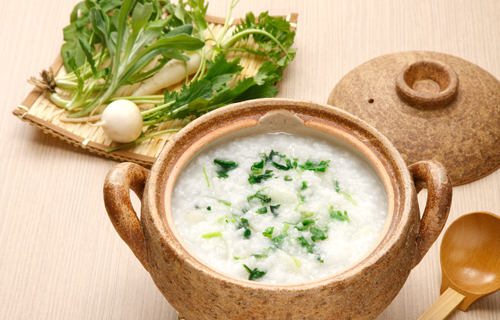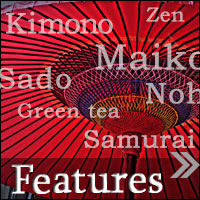Kyoto Cuisine
Kyoto Cuisine
- What is Kyoto cuisine? Kyoto cuisine has characteristics of using processed materials and tries to make the most of the material taste.

Its say to enjoy not only the taste, it should feel with all five senses.
Originally, Kyoto location was difficult to obtain fresh seafood, so cultivated variable vegetables and developed to maximally take out its flavor.
The fusion of Shojin cuisine of temple, Honzen cuisine of Samurai, and Kaiseki of Zen affected each other and established today’s Kyoto cuisine.
Specially, Tea ceremony’s mind which is less noise for everything, Kyoto cuisine got a beauty, color balance, dishes combination and other details as we find in Kyoto.
On the other hand, “Obanzai” which is side dish for everyday, utilized the taste of seafood, which was really difficult to get, and local vegetables to make another form, was reached to a point of balance.
Kyoto Cuisine and seasonal function
Kyoto people feeling seasons and put importance to the tradition, for purification and for peaceful everyday, eat special meals as practice. Ie. The first day of the year, prepare sweet vegetable soup using white miso with large potato. And the 4th of January, eat soup of foliage vegetable and rice cake. The 7th eat porridge of seven different herbs, etc. In Kyoto, “Seasonal” cuisine has much more meaning (and using materials and unique vegetables) than the other area of Japan and has tradition / history, its easily to find in our life even now.

- Kyoto Cuisine
- Kyoto Cuisine
- Shojin Cuisine
- Tofu
- Umaki
- Atsuage
- Saikyo Yaki
- Kyoto Sweets
- Kyoto Sweets
- Kuzukiri
- Yatsuhashi
- Tsukemono (Picles)
- Tsukemono (Picles)
- Green Tea
- Green Tea




